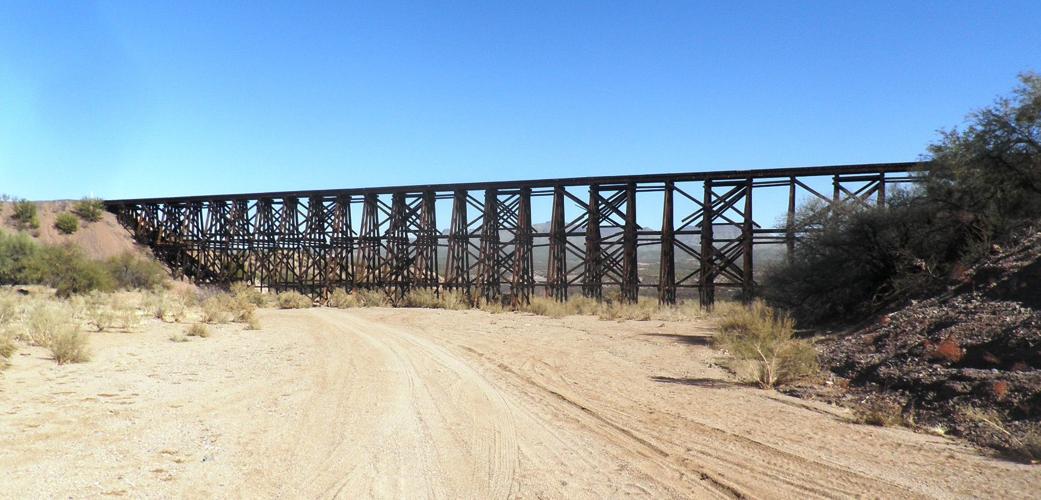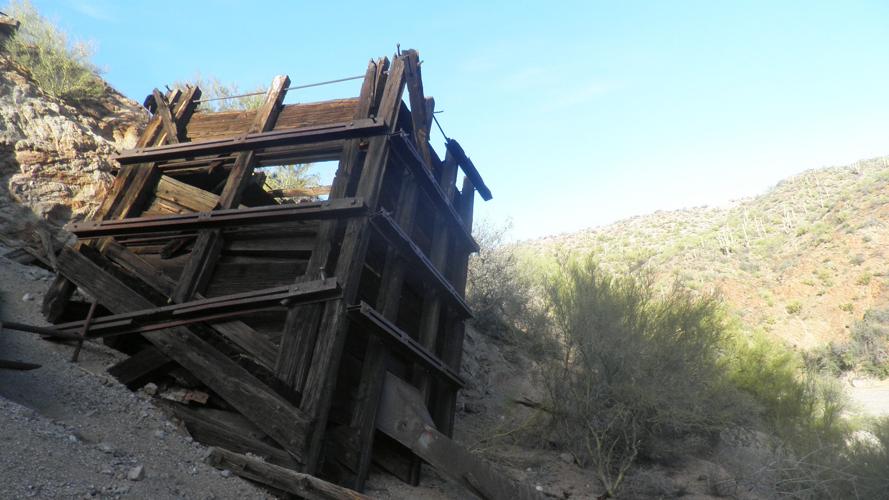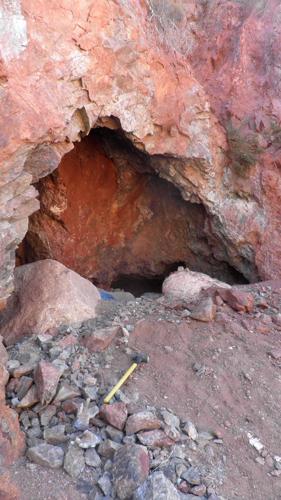Although prospecting was undertaken as early as the 1850s in what became known as the Mammoth Mining District or the Old Hat Mining District, it was not until 1881 that mining intensified.
Located 3 miles southwest of the town of Mammoth on the San Pedro River, the area on the east flank of the Black Hills, a low range north of the Santa Catalina Mountains, saw the development of the Mammoth, Mohawk and New Year properties occurring on what came to be known as the Mammoth vein after its discovery by Frank Schultz.
A 30-stamp amalgamation mill financed by profits made from the discovery of gold ore at the Mammoth Mine by C.R. Fletcher and associates was conveniently built at Mammoth to process the ore from surrounding mines. The mill was heightened to 50 stamps after Mammoth Gold Mines Ltd. acquired the property in 1889.
The Mammoth Tiger Extension Mine, also known as the Ford Mine, was discovered in 1879, reportedly shipping a small quantity of high-grade lead/silver ore shortly thereafter. By 1920 it was shut down due to the expense associated with water removal.
A 900-foot shaft sunk from the neighboring Collins, Mammoth, Mohawk and New Year mines to the east successfully drained the water from the Ford Mine.
By the time it was acquired by the Mammoth-Tiger Extension Mining Corp. in 1942, it consisted of 1,400 feet of underground workings along with a retimbered shaft, a new gallows headframe and the mucking out of all the winzes, stopes and tunnels.
Mining engineer Sam Houghton optioned the New Year Group of mines in 1926.
The development of a 140-foot-deep shaft followed with the discovery of profitable quantities of gold, vanadium and lead.
Despite the Great Depression, rising gold prices in 1933 enabled Houghton to promote his mines. That year, the New Year mines and the Mohawk Mine were acquired by the Molybdenum Gold Mining Co., a subsidiary of the Molybdenum Corp. of America. The company, employing 32 men, continued to develop the underground mines while erecting a cyanide plant.
In 1934, the company was shipping several carloads of ore to the Molybdenum Corp. refinery in Washington, Pennsylvania. An onsite 200-tons-per-day gravity concentration and cyandidation mill was built in 1935.
As business increased, the mill was modified to handle 300 tons of ore per day, replete with a gravity concentrating plant consisting of six concentrating tables. The tailings were then sent to a cyanide leaching plant for recovery.
In 1939, the Mammoth-St. Anthony Mining Co. Ltd. acquired the Mohawk and New Year mines from the Molybdenum Gold Mining Co. The consolidation of mines, including that of the Mammoth Mine, under the control of a single company resulted in the formation of the town of Tiger, which reached a peak population of 1,800 people.
Mining operations at Tiger were focused on producing strategic metals during World War II.
The U.S. military sent several dozen men to aid in mining operations at Tiger because of a lack of manpower due to wartime conscription. Tiger was also the site of only one of two plants that could successfully process molybdenum and vanadium from other metals.
The mining property was purchased by the Magma Copper Co. in 1953, and operations were suspended due to the declining market prices for lead and zinc.
Credited with having produced 400,000 ounces of gold, 1 million ounces of silver, 3.5 million pounds of copper, 75 million pounds of lead, 50 million pounds of zinc, 6 million pounds of molybdenum oxide and 2.5 million pounds of vanadium oxide, the Tiger property was later worked by lessees for gold-bearing tailings and later subject to reclamation under BHP Billiton Ltd.
Tucson Wash just west of the Tiger property connected the towns of Mammoth and Oracle in the late 19th and early 20th centuries.
It is now a popular adventure excursion for off-road vehicles and mineral collectors seeking wulfenite crystals at the Ford Mine accessible from the wash.







